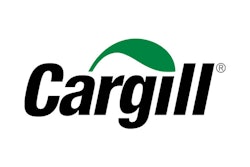
 Todd Allsup, Vice President of Food & Beverage Facility Services, Stellar
Todd Allsup, Vice President of Food & Beverage Facility Services, StellarThere’s never been a better time to invest in capital expenditures for your business. Recent tax reform has freed up cash and created more incentives for corporate entities to spend on new equipment and infrastructure.
Plus, the combination of mergers and acquisitions, advances in technology and evolving consumer demand is spurring innovation. The speed-to-market food and beverage industry is only moving faster.
So it’s a great time to invest in your company’s growth, but what exactly is the best move? Considering the current industry climate, there are some forward-thinking options worth prioritizing.
1. Food Safety Enhancements And FSMA Compliance Measures
As Food Safety Modernization Act (FSMA) compliance dates loom for many companies, it may be the perfect time to update your facility accordingly to meet the stricter standards. Or perhaps you’re considering expanding your product offerings in the near future and need to build out new areas to separate allergens.
Regardless of what plans you have your business moving forward, improving your facility’s food safety is always a wise investment. Some possible projects include:
- Improving hygienic zoning to ensure proper air balance/pressurization
- Constructing new spaces for allergen segregation and storage
- Updating flooring to promote efficient cleaning and drainage
Not sure where to start? A comprehensive facility assessment can help identify inefficiencies in your plant and streamline everything from utilities to processing to save you time, energy and money.
2. Incorporate Robotics And Automation
The decreasing cost of robotics, the increase in workforce turnover/shortages and the new tax law incentives makes now an ideal time to invest in robotics and automation.
Plus, the unemployment rate is the lowest it’s been in a decade. This shortage of “available” workers has sparked a war for talent, meaning more employees are willing to leave jobs for financially greener pastures.
This turnover frequency — along with the cost of constantly recruiting, hiring and training employees — has led many companies to increasingly rely on robotics to take over certain tasks in a plant, particularly ones that are repetitive.
Introducing robotics and automation into a facility’s process often improves quality while reducing headcount, significantly improving a company’s bottom line, especially as robotics are becoming more cost-effective. Plus, when machines handle ergonomically challenging or hazardous jobs instead of people, injury risks and workers’ compensation claims decrease. It’s a win-win.
Bringing robots into your facility doesn’t necessarily mean ushering human employees out. Many companies are using this technology alongside plant personnel to increase production volume and efficiency while maintaining current staff.
3. Upgrade Your Refrigeration System
The phaseout of ozone-depleting substances with high global warming potential (GWP) means R22 will soon be obsolete. By January 1, 2020, the refrigerant will be phased out completely with no new or imported R22 allowed in the United States. Plus, as the supply of R22 shrinks year-to-year, prices are also going up.
These factors are motivating many food and beverage manufacturers to proactively upgrade their refrigeration systems to utilize natural refrigerants such as ammonia (NH3) or carbon dioxide (CO2).
Another investment option: low-charge packaged refrigeration, which uses ammonia or CO2 and a secondary refrigerant (such as glycol). Facilities can reap the benefits of these refrigerants’ excellent thermodynamic properties while minimizing the refrigerant charge and risk as the ammonia is isolated to one area and only the secondary refrigerant is circulated throughout the facility.
This type of system is “packaged” or “modular,” with refrigeration equipment built off-site, mounted on a structural steel base (or skid), and delivered to your plant as a self-contained, “plug-and-play” system. Because it confines ammonia to the machine room and only uses about one pound of ammonia per ton of refrigeration, the charge is minimized.
Note: This post is based on an excerpt from Stellar’s e-book, “Cuts, Credits and Write-offs: How food and beverage manufacturers can leverage the Tax Cuts and Jobs Act of 2017.”
About Stellar
Stellar is a fully integrated firm focused on planning, design, pre-construction, construction, refrigeration, mechanical & utility, building envelope, and total operations & maintenance services worldwide. Visit the company's blog at www.stellarfoodforthought.net or learn about its projects at stellar.net.






















